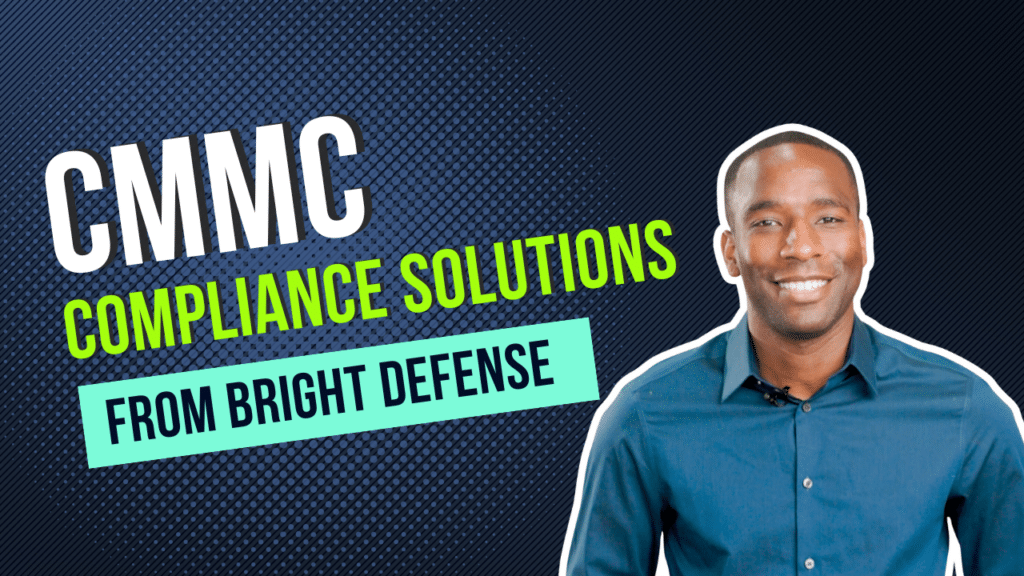
John Minnix
February 26, 2025
SOC 2 vs. NIST: Choosing the Right Compliance Framework for You
Introduction: SOC 2 vs. NIST
Choosing the right compliance framework for your business can be complicated. SOC 2 vs. NIST is a common framework comparison. Both frameworks aim to protect your data, but they take different routes. SOC 2 is focused on trust and security in handling customer data, especially for service organizations. On the other hand, NIST provides a broad set of guidelines to help organizations of all sizes improve their cybersecurity.
In this article, we’ll break down SOC 2 and NIST in simple terms and compare their approaches to data security and compliance. By the end of this guide, you’ll have a clearer picture of which framework suits your business needs, helping you make a well-informed decision on the path to robust data security.

What is SOC 2?
SOC 2, short for Service Organization Control 2. It is a framework designed for service providers storing customer data. It was developed by the American Institute of CPAs (AICPA). SOC 2 is not just a one-time checklist but a set of criteria for managing customer data. It is based on five trust service principles: Security, Availability, Processing Integrity, Confidentiality, and Privacy.
- Security ensures that systems are protected against unauthorized access.
- Availability refers to the system’s accessibility for operation and use, as agreed.
- Processing Integrity means system processing is complete, valid, accurate, timely, and authorized.
- Confidentiality involves protecting any confidential information as promised or agreed.
- Privacy addresses the system’s collection, use, retention, disclosure, and disposal of personal information in conformity with the organization’s privacy notice.
Two types of SOC 2 reports are Type I and Type II. Type I describes the vendor’s systems and whether their design meets relevant trust principles. Type II details the operational effectiveness of these systems. SOC 2 is highly flexible and can be tailored to each organization’s unique needs. It is not prescriptive but requires companies to establish and follow strict information security policies and procedures.
What is NIST?
The National Institute of Standards and Technology (NIST) is an influential body under the U.S. Department of Commerce, focusing on developing standards and technology to improve security, efficiency, and competitiveness in various sectors. NIST is recognized for its comprehensive frameworks, which guide organizations in managing and reducing cybersecurity risks. While NIST has developed numerous frameworks and standards, three stand out for their widespread applicability and robustness: the NIST Cybersecurity Framework (CSF), NIST 800-53, and NIST 800-171.
- NIST Cybersecurity Framework (CSF) is a flexible guide designed to help organizations of all sizes and sectors manage and mitigate cybersecurity risks. It is built around five core functions: Identify, Protect, Detect, Respond, and Recover. These functions provide a high-level, strategic perspective on the lifecycle of managing and reducing cybersecurity risks.
- NIST 800-53 offers a catalog of security and privacy controls for all U.S. federal information systems, except those related to national security. It is known for being comprehensive, prescriptive, and widely used by government agencies and contractors to align with federal requirements.
- NIST 800-171 is specifically tailored for non-federal organizations that handle Controlled Unclassified Information (CUI). It aims to protect sensitive federal information in non-federal systems and organizations. NIST 800-171 is critical for contractors and entities working directly with the federal government. It ensures they maintain a robust security posture to safeguard sensitive data.
NIST frameworks are celebrated for their thoroughness and adaptability, offering a structured yet flexible approach to cybersecurity. Unlike prescriptive regulations, NIST provides guidelines and best practices. This allows organizations to tailor their implementation strategies to their needs, size, and industry sector.
Organizations can better navigate their compliance journey by exploring the benefits and intent of SOC 2 and NIST. This aligns their operations and security measures with the framework best fitting their business model and objectives. The next sections will delve into the distinctions between SOC 2 and NIST and provide insights into choosing the most suitable framework for your organization.

Key Differences between SOC 2 and NIST
Understanding the distinctions between SOC 2 and NIST frameworks is crucial for organizations choosing the right path for their compliance strategy.
- Scope and Applicability: SOC 2 primarily targets service organizations, especially those storing customer data. It is especially relevant for SaaS providers and organizations that store data in the cloud. In contrast, NIST provides a more universal set of guidelines that can be applied across various sectors. These include federal agencies, contractors, and private sector organizations.
- Control Frameworks and Requirements: SOC 2 is based on AICPA’s Trust Service Principles. These focus on security, availability, processing integrity, confidentiality, and customer data privacy. NIST offers a broader set of controls and standards, such as those in NIST 800-53 for federal information systems and NIST 800-171 for protecting CUI in non-federal systems.
- Assessment and Certification Process: SOC 2 reports (Type I and Type II) are conducted by external auditors. NIST does not certify organizations but provides a framework for compliance. However, entities dealing with CUI must adhere to NIST 800-171 and may be subject to assessments under the Cybersecurity Maturity Model Certification (CMMC) program.

Why Choose SOC 2?
Choosing SOC 2 is particularly beneficial for service-oriented businesses that must demonstrate high security and privacy controls to their clients.
- Client Assurance: SOC 2 is widely recognized in the industry, especially in the United States and Canada. A SOC 2 certification can significantly boost your organization’s credibility, showing your commitment to protecting client data.
- Market Demand: Many businesses require their service providers to be SOC 2 compliant, especially when handling sensitive or critical information.
- Customizable Framework: SOC 2 allows organizations to tailor their controls to specific business practices, providing flexibility in implementing security measures.
Why Choose NIST?
NIST frameworks are ideal for organizations looking for a comprehensive and structured approach to managing cybersecurity risks. NIST is especially relevant to companies working with the federal government or handling sensitive information.
- Broad Applicability and Recognition: NIST standards are globally recognized and provide a trusted benchmark for cybersecurity. This makes them beneficial for a wide range of industries.
- Compliance with Federal Requirements: For organizations working with the U.S. government or handling CUI, compliance with NIST 800-171 is mandatory. Adherence to NIST standards can open doors to federal contracts and partnerships.
- Integration with CMMC: The Cybersecurity Maturity Model Certification (CMMC) is a unifying standard for implementing cybersecurity across the defense industrial base. NIST 800-171 is the foundation for CMMC Level 3. Adhering to NIST standards can help organizations prepare for CMMC assessments, which are crucial for contractors in the defense sector.
By weighing the specific needs, industry requirements, and client expectations, organizations can decide between SOC 2 and NIST. They can even consider aligning with both frameworks to maximize their compliance and security posture. The next section will explore the scenario where organizations might pursue both SOC 2 and NIST simultaneously and how to navigate the complexities of dual compliance.

Pursuing Both SOC 2 and NIST
In some cases, organizations may find it advantageous or necessary to align with both SOC 2 and NIST frameworks. This dual approach can maximize data protection and compliance, especially for companies that operate in diverse sectors or offer a wide range of services.
- Enhanced Trust and Security: By adhering to both frameworks, organizations can demonstrate a high level of commitment to data security and privacy. This may appeal to a broader client base.
- Comprehensive Compliance Strategy: Some industries may require compliance with both standards due to their specific regulatory landscape or business model. For instance, a cloud service provider working with government agencies might need SOC 2 for general business purposes and NIST compliance for federal contracts.
- Leveraging Synergies: While SOC 2 and NIST have distinct focuses, there are overlaps in their controls and processes. Organizations can streamline their compliance efforts by identifying and leveraging these synergies, reducing redundancy, and optimizing resource allocation.
However, pursuing dual compliance requires careful planning and resource management. Organizations should conduct a thorough gap analysis, assess the cost-benefit ratio, and develop a strategic plan that addresses the unique demands of each framework while capitalizing on their commonalities.

The Role of Continuous Compliance in SOC 2 and NIST Frameworks
Continuous compliance is an ongoing process of ensuring that an organization adheres to the required standards and regulations at all times, not just during annual audits or assessments. In the context of SOC 2 and NIST frameworks, continuous compliance plays a pivotal role.
Continuous Monitoring and Improvement:
- SOC 2: Given that SOC 2 is more than a one-time assessment, organizations need to continuously monitor their controls related to the five trust service principles. This involves regular reviews of security measures, updates to policies as per the changing technology landscape, and consistent employee training to ensure that everyone is aligned with the organization’s security protocols.
- NIST: NIST frameworks, particularly the Cybersecurity Framework (CSF), emphasize continuous monitoring and improvement as part of their core functions. Organizations are encouraged to regularly identify and assess cybersecurity risks, protect their assets through ongoing maintenance of security controls, detect anomalies promptly, and constantly refine their response and recovery strategies.
Automation and Integration:
- Integrating compliance activities into daily operations can significantly reduce the burden of maintaining continuous compliance. Automation tools can help in regular data monitoring, timely reporting of compliance metrics, and swift detection and mitigation of potential issues.
- For both SOC 2 and NIST frameworks, leveraging technology to streamline compliance processes ensures that the organization remains compliant and can quickly adapt to new threats or changes in regulations.
Culture of Compliance:
- Building a culture of compliance is vital. This means fostering an environment where data security and adherence to standards are ingrained in the daily activities of all team members.
- Regular training, clear communication of policies, and a top-down emphasis on the importance of compliance are crucial. When employees understand their role in maintaining SOC 2 and NIST standards, they become active participants in the organization’s security posture.
Documentation and Evidence:
- Continuous compliance requires meticulous documentation. For SOC 2, this means keeping detailed records of policies, procedures, and control activities. For NIST, it involves maintaining comprehensive documentation of the implementation of controls and ongoing risk management activities.
- Regularly updated documentation supports compliance and streamlines the audit process. This provides clear evidence of the organization’s commitment to maintaining high security and privacy standards.
Vendor and Third-Party Management:
- As organizations often rely on third-party vendors, ensuring that these partners also adhere to SOC 2 and NIST standards is part of continuous compliance. This involves regular assessments of vendor security practices, contractual agreements on compliance standards, and continuous monitoring of third-party risks.
In conclusion, continuous compliance with SOC 2 and NIST is an integral part of an organization’s operations. It demands ongoing vigilance, a culture that prioritizes security and privacy, and the effective use of technology to automate and integrate compliance activities. By embracing continuous compliance, organizations strengthen their reputation, ensuring lasting trust with clients and partners.

Conclusion
Choosing the right compliance framework—SOC 2, NIST, or both—is a strategic decision that should align with an organization’s specific operational, market, and regulatory requirements. SOC 2 offers a flexible, trust-based framework ideal for service organizations keen on demonstrating their commitment to security and privacy. NIST, on the other hand, provides comprehensive and structured guidelines suitable for a broad range of industries, especially those engaged with federal agencies or handling controlled unclassified information.
For some organizations, aligning with both SOC 2 and NIST may be the optimal approach. This offers a comprehensive compliance strategy that meets diverse client and regulatory demands. Regardless of the choice, the key to successful compliance lies in a thorough understanding of each framework, a clear assessment of your organization’s unique needs, and a well-structured implementation strategy. By carefully considering the nuances, benefits, and strategic implications of SOC 2, NIST, or a combined approach, organizations can ensure they choose a compliance path that not only meets industry standards but also supports their overall business goals and enhances their market position.

Bright Defense Delivers SOC 2 and NIST Compliance Solutions
Are you ready to SOC 2 or NIST compliance? Bright Defense can help. Our mission is to defend the world from cybersecurity threats through continuous compliance. We help you improve your security posture to help mitigate the risk of a data breach.
With our monthly service offering, our CISSP and CISA-certified security experts will develop and execute a cybersecurity plan and security controls to meet compliance standards, including SOC 2, NIST, CMMC, HIPAA, and ISO 27001. Our service includes a compliance automation platform that increases efficiency and lowers the cost of compliance.
Other services include vulnerability management, security awareness training, phishing testing, and vCISO services. Get started today with Bright Defense!
Frequently Asked Questions
What is cybersecurity risk management and how do SOC 2 and NIST frameworks assist in it?
Cybersecurity risk management involves identifying, assessing, and implementing strategies to mitigate risks to information systems and data. Both SOC 2 and NIST frameworks play a crucial role in this process. SOC 2 focuses on specific criteria related to security, availability, processing integrity, confidentiality, and privacy, helping organizations protect data, particularly in cloud environments. The NIST framework, through guidelines like NIST CSF and NIST 800-53, provides a comprehensive set of controls for organizations to manage cybersecurity risk effectively. This ensures they can identify, protect, detect, respond to, and recover from cybersecurity threats.
How do SOC 2 and NIST address access control to protect sensitive data?
Access control is a fundamental aspect of both SOC 2 and NIST frameworks to protect sensitive data. SOC 2 requires organizations to implement controls that restrict access to information systems, ensuring that only authorized individuals can access sensitive data. Similarly, the NIST framework includes detailed guidelines for access control, requiring organizations to implement effective controls that limit access based on the principle of least privilege and enforce separation of duties. This safeguards sensitive data from unauthorized access.
Why is it important for certified public accountants (CPAs) to understand SOC 2?
Certified public accountants play a key role in the SOC 2 audit process. SOC 2 is a framework developed by the American Institute of CPAs (AICPA). CPAs are responsible for conducting SOC 2 audits. They assess the design and operational effectiveness of an organization’s controls related to the trust service principles. CPAs provide SOC 2 reports which demonstrate compliance and help build trust with stakeholders, making their understanding of SOC 2 crucial in the current regulatory environment.
How can organizations implement controls to manage cybersecurity risk effectively?
To manage cybersecurity risk effectively, organizations can implement controls by following structured frameworks like SOC 2 and the NIST framework. This involves first identifying specific cybersecurity risks and then developing and implementing policies, procedures, and technologies to mitigate those risks. SOC 2 and NIST provide guidelines for establishing a robust cybersecurity program, including implementing effective controls for information security, incident response, access management, and regular monitoring and evaluation to ensure that the controls remain effective over time.
What role does the cybersecurity framework play in helping organizations protect data?
The cybersecurity framework, especially the NIST Cybersecurity Framework (CSF), provides organizations with a structured approach to protect data. It helps organizations assess and improve their ability to prevent, detect, and respond to cyber incidents. By following the core functions of the CSF—Identify, Protect, Detect, Respond, and Recover—organizations can develop a comprehensive cybersecurity program that not only protects data but also manages and reduces cybersecurity risk in an ongoing, consistent manner.
How can businesses demonstrate compliance with information security and compliance requirements?
Businesses can demonstrate compliance with information security and compliance requirements by adhering to recognized frameworks like SOC 2 and NIST. Conducting regular audits and assessments, maintaining detailed documentation of policies, procedures, and control implementations, and obtaining SOC 2 reports or aligning with NIST standards are effective ways to demonstrate compliance. These actions assure stakeholders that the organization is committed to protecting sensitive data and meeting the current regulatory environment’s demands.
Why is it important for organizations to stay updated with the current regulatory environment and compliance framework?
Staying updated with the current regulatory environment and compliance framework is crucial for organizations to ensure they are meeting legal and industry-specific requirements. The regulatory landscape is constantly evolving, and non-compliance can result in severe legal, financial, and reputational consequences. By keeping abreast of changes in security standards and compliance requirements, organizations can adapt their cybersecurity program and information systems promptly, ensuring continuous protection of sensitive data and ongoing compliance.
How can organizations ensure that their cybersecurity program aligns with the NIST framework?
Organizations can ensure that their cybersecurity program aligns with the NIST framework by conducting a gap analysis to compare their current cybersecurity practices with the NIST standards. This involves understanding the NIST guidelines, assessing the current cybersecurity posture, and identifying areas of improvement. Implementing the recommended security controls, regular training for employees, and continuous monitoring and assessment of the cybersecurity program against the NIST framework will help maintain alignment and ensure effective controls are in place to protect sensitive information systems.
Get In Touch



